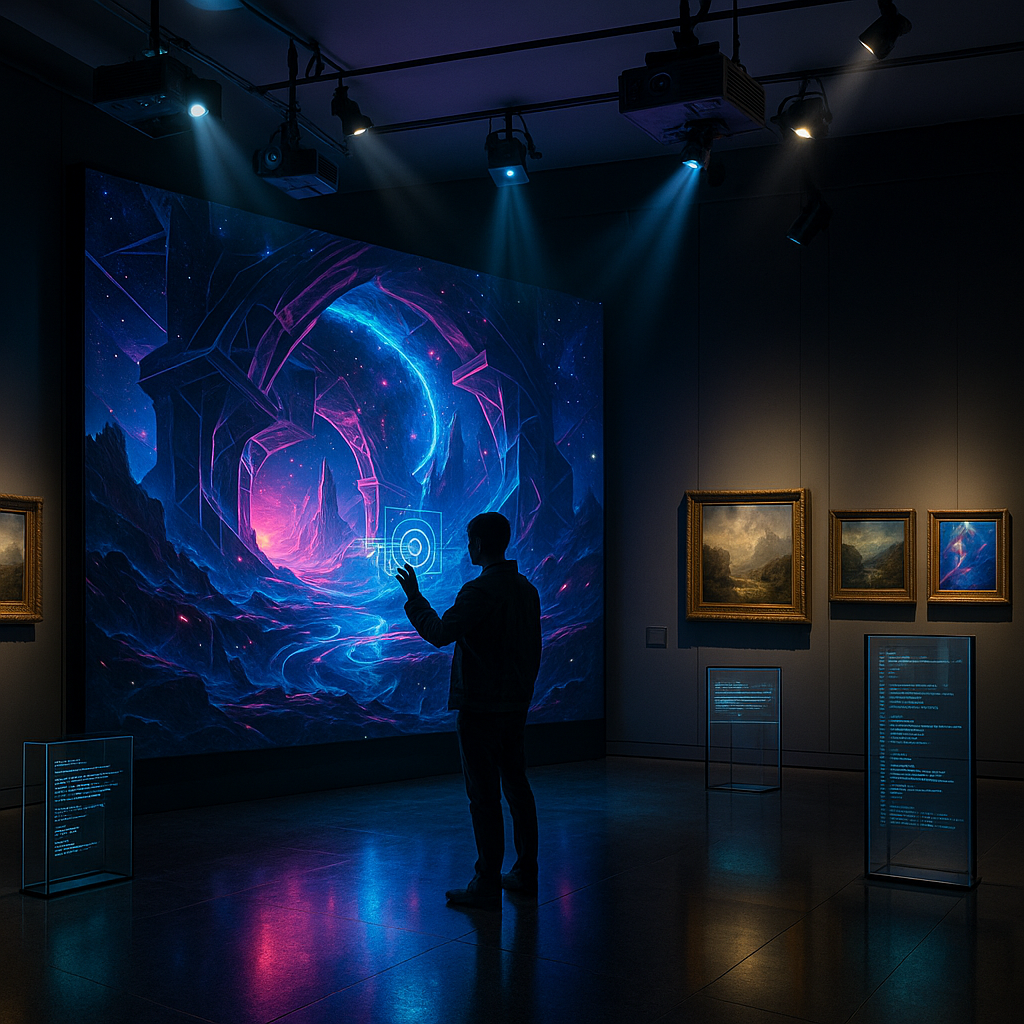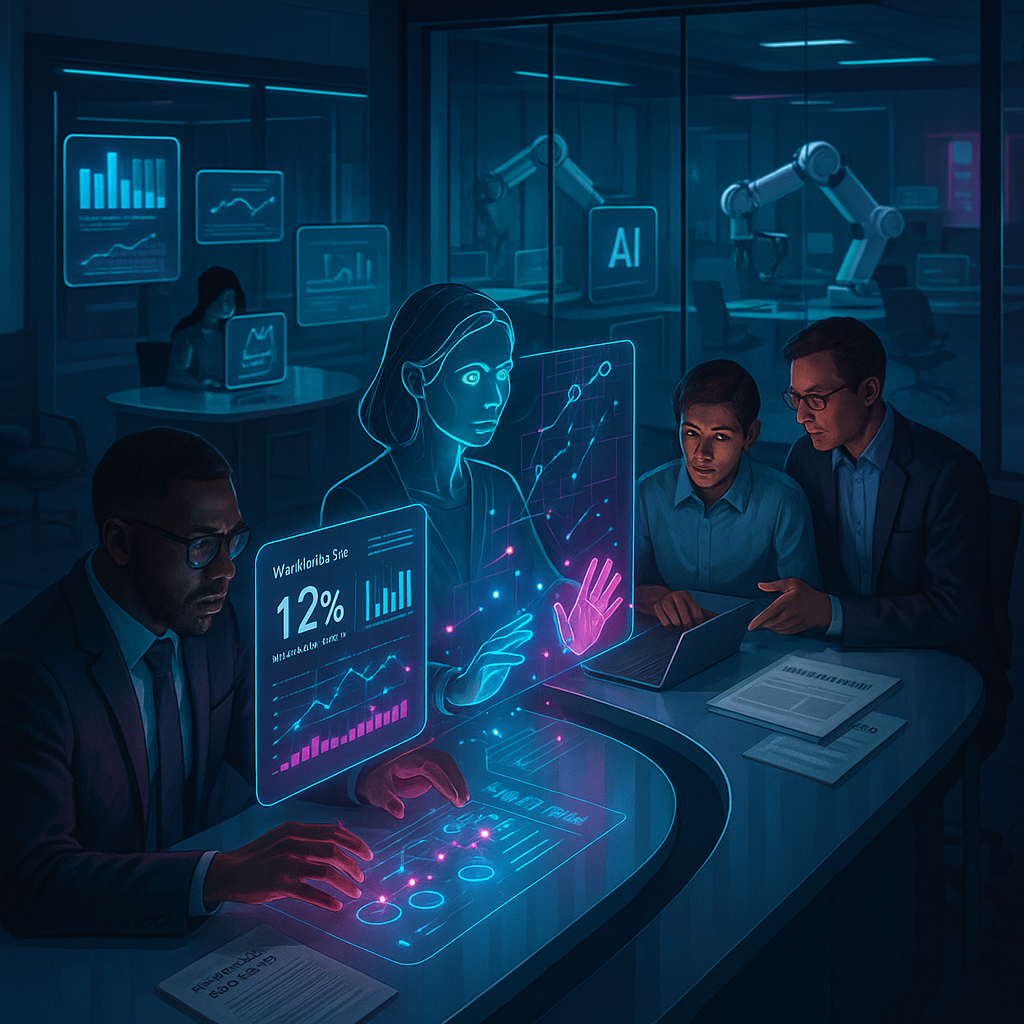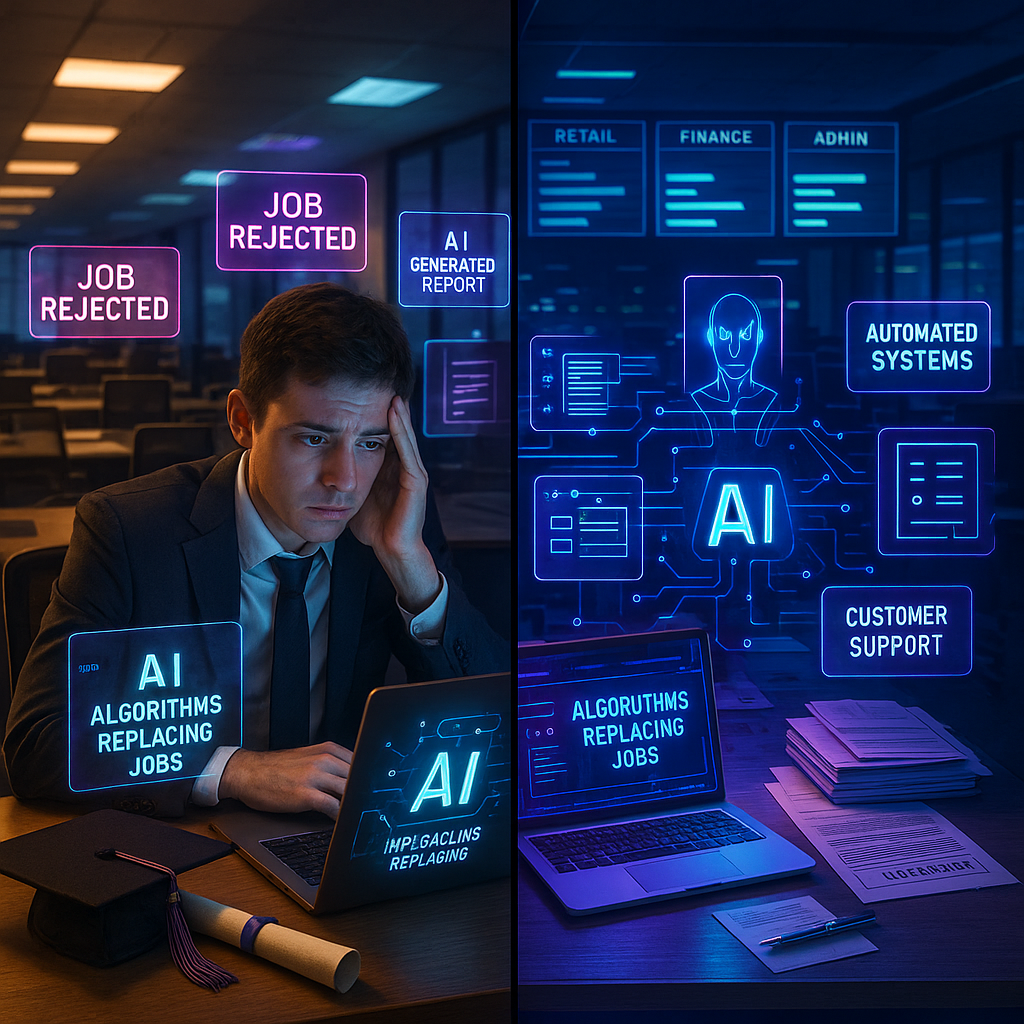Key Takeaways
- AI art ignites the debate over the ‘artificial sublime.’ Generative art challenges Kant’s notion that the sublime is beyond mechanical creation, suggesting machines may unlock aesthetic heights once thought unreachable by algorithms.
- Sublime machines prompt a radical rethink of aesthetic theory. The emergence of AI-generated masterpieces compels us to question established ideas about creativity, intention, and the origins of meaning in art.
- Emotional response is no longer uniquely human. Machine-generated visuals can evoke awe, wonder, and even discomfort, blurring the line between genuine empathy and artificial affect. This raises a central question: can we be authentically moved by a mindless creator?
- The emotional Turing test comes to the gallery. Encounters with generative art push viewers to confront whether their emotional responses mirror those elicited by human-made works, reframing our understanding of ‘machine empathy’ and the feeling of being genuinely touched.
- Meaning shape-shifts in the age of generative art. With AI as the ‘artist,’ the locus of artistic meaning shifts from creator to audience, turning interpretation into a deeply collaborative act of sense-making.
- AI aesthetics reveal a hidden philosophical contradiction. Far from diminishing creativity, AI art exposes the limitations of traditional aesthetic doctrine, prompting a fundamental revision of what we call the aesthetic and the sublime.
Probing deeper into the collision of machine intelligence and the mysteries of beauty, we are invited to ponder not just what AI can do, but what it means for aesthetics, empathy, and the expanded power and future of art. The ‘alien minds’ of AI are now redrawing the map of the sublime for our time.
Introduction
Can an algorithm conjure wonder? As generative art invades galleries, screens, and cultural spaces, AI aesthetics no longer reside in the realm of distant speculation. Instead, they demand a direct confrontation with our oldest questions about beauty, meaning, and what it truly takes to be moved. Sublime machines have begun to unveil images and ideas that suggest awe, terror, and transcendent experience are no longer the exclusive craft of human hands. These works stir debates not even Kant could have anticipated.
As these uncanny creations infiltrate our visual world, they rewire our aesthetic instincts and force us to consider the emotional Turing test. Are the chills and waves of awe you feel any less genuine when provoked by lines of code instead of human consciousness? The boundaries between artist, audience, and algorithm are dissolving, making interpretation more joint venture than solitary act, and rendering the very definition of the sublime wonderfully unstable. This invites us into the paradoxical core of AI-generated art, where creativity and empathy are being reimagined through human-machine collaboration.
The Evolution of Aesthetic Experience in the Digital Age
The rapid ascent of AI-generated art is transforming how we understand and experience aesthetics across diverse fields. It presses us to rethink the foundations of beauty, awe, and creative agency. Where classical philosophy might have declared the sublime unreachable by mere mechanism, machine imagination now insists on an updated dialogue between technology and artistry.
Stay Sharp. Stay Ahead.
Join our Telegram Channel for exclusive content, real insights,
engage with us and other members and get access to
insider updates, early news and top insights.
 Join the Channel
Join the Channel
Redefining the Sublime Through Machine Creation
The Kantian concept of the sublime (characterized by an overwhelming sense of awe or terror in the face of something vast or incomprehensible) finds new expression through artificial intelligence. Whereas Kant situated the sublime in human encounters with overwhelming nature, today’s AI systems like DALL-E and Midjourney produce intricate dreamscapes and alien vistas that surpass the limits of individual human imagination. These outputs inaugurate a new category: the artificial sublime. They fulfill and yet transform Kant’s criteria through non-human means.
This phenomenon isn’t just some abstract theory. Recent gallery exhibitions, such as the “Artificial Sublimity” showcase at the Tate Modern, have featured AI-generated works that provoke feelings of grandeur and insignificance. One particularly striking piece employed a neural network to generate an ever-evolving cosmic landscape—visitors reported that it elicited the same sense of vastness and awe as experiences traditionally reserved for natural wonders or masterworks by human hands.
Beyond galleries, this sense of the sublime is translating into other sectors. In healthcare, AI-driven imaging systems are capable of rendering previously unimaginable visualizations of cellular life, eliciting awe at the hidden complexity of our own biology. Environmental science is seeing AI-powered climate impact models create dynamic, grand representations of planetary change. People are feeling both wonder and unease.
The Philosophical Paradox of Machine-Made Beauty
AI’s capacity to evoke powerful aesthetic experiences puts us in direct conflict with philosophical tradition. Kant argued that the sublime arises from the confrontation of the mind with something greater than itself. Now, though, AI-generated art produces responses Kant deemed unreachable by machines. The paradox here is pretty striking: humans are confronted by works that exceed their individual creative faculties, yet these arise from algorithms without consciousness or intent.
Scholars interpret this evolution in a few broad frameworks:
- The Neo-Kantian Perspective (AI-generated art forms a new subclass of the sublime, parallel to but distinct from human creations, requiring an updated philosophical vocabulary).
- Post-human Aesthetics (this view interprets the machine sublime as a sign of emerging hybrid consciousness—a convergence of algorithmic and human sensibilities redefining creativity itself).
- The Critical Theory Approach (the question here is whether genuine sublime experiences can ever be birthed by algorithms, or if the meaning is always an empty simulation, lacking the interiority that gives human art its soul).
These frameworks aren’t just speculation. Within education, for instance, AI-generated content that stuns or unsettles students might be evaluated for its capacity to foster not only technical literacy but also emotional growth and philosophical reflection. In finance, AI-crafted data visualizations can subtly evoke feelings of order or chaos, shaping investor psychology and challenging what counts as meaningful presentation or persuasion.
Generative Art and the Boundaries of Creativity
Machine creativity, exemplified by AI tools generating visions that move viewers to awe or tears, raises essential questions about authenticity and simulation. If you encounter an emotionally powerful work produced entirely by Midjourney, is your reaction any less authentic than one to a painting by a human artist? The indistinguishability of human- and machine-generated art compels us to confront whether the creative process requires consciousness or simply process.
Empirical research by groups like the AI Art Foundation shows that viewers frequently cannot differentiate between emotional responses to works created by humans and those generated by algorithms. This insight disrupts older views of creativity as a singularly human domain. In the legal realm, things get tricky: this ambiguity complicates questions of copyright and ownership. Should creative rights extend to the architects of the algorithm, the users, or the AI itself? In marketing, machine-generated campaigns that evoke strong audience reactions bring fresh challenges to principles of authenticity and brand identity.
The Cultural Impact of Sublime Machines
AI-created art is now a permanent fixture in cultural discourse, sparking debates across disciplines over the future of creativity, authorship, and value. As these technologies gain traction, industries are adapting to an expanded role for machines in shaping and scaling sublime experience.
The Democratization of the Sublime
Accessible AI art tools have swung the doors wide open to aesthetic production, enabling individuals without traditional training to generate works of extraordinary visual or emotional impact. This democratization takes the wind out of old gatekeeping structures and challenges assumptions about artistic merit. Anyone can now summon images of the “unimaginable” with a few prompts and a fresh idea.
The impacts go well beyond art. In education, teachers can use AI to craft evocative imagery or scenarios that bring abstract lessons to life, making learning a site of shared sublimity. In healthcare, clinicians employ AI-generated visualizations to explain complex diagnoses or treatments, transforming routine consultations into moving, empathy-filled encounters.
Still, this ease of access introduces new dilemmas:
- The question of authenticity in a world overflowing with high-quality, algorithmically-produced art.
- The shifting importance of curation, context, and human intervention in defining value within swarms of generative output.
- The risk of devaluing the sublime through oversaturation. Does the infinite availability of awe dilute its impact—or does it expand our collective sense of wonder?
Broader Industry Transformations and Ethical Challenges
The reach of the artificial sublime now penetrates multiple fields. In finance, AI-generated “data art” can sway investor sentiment by transforming heaps of statistics into emotionally resonant visualizations. Legal professions use AI to create powerful visual exhibits that dramatize complex cases, raising questions about authenticity, persuasion, and fairness. Environmental scientists employ machine-generated climate projections to evoke urgency and responsibility, connecting audiences emotionally with global trends.
These examples make it clear we need robust ethical frameworks. As machines become more adept at moving us, communities face new questions. Who should regulate the production of powerful emotional stimuli? How do we attribute value (and responsibility) when both humans and machines are co-authors of the sublime?
Future Implications for Aesthetic Theory
AI’s rapid development forces philosophers, critics, and practitioners to develop new conceptual tools that accommodate human-machine collaboration. The canon of aesthetic theory must evolve to include not only historical and critical perspectives, but also computational, networked, and hybrid strategies.
The path ahead will likely require:
Stay Sharp. Stay Ahead.
Join our Telegram Channel for exclusive content, real insights,
engage with us and other members and get access to
insider updates, early news and top insights.
 Join the Channel
Join the Channel
- Merging insights from computational aesthetics with classical notions of beauty and meaning.
- Expanding theories of agency and interpretation to recognize artificial contributors as well as the participatory role of audiences.
- Rethinking authenticity, value, and creativity, not as binary categories (human versus machine) but as distributed processes involving complex networks of actors.
Such a reckoning will transform curricula in the arts, humanities, and sciences. Business leaders will need to reflect on the cultural significance of creative AI, while policymakers face the challenge of articulating regulations that honor innovation and ethical consideration. The flourishing of the artificial sublime, then, becomes not just a technological story. It is a societal pivot point, an opportunity to redraw the boundaries of meaning, value, and humanity itself.
Conclusion
The entanglement of art, technology, and perception in the digital age signals a fundamental transformation across artistic, philosophical, and commercial domains. AI-generated masterpieces do not merely alter our definitions of the sublime; they unsettle and expand the boundaries of creativity, agency, and meaning. Machines now co-create works that overpower the senses, prompting us to question whose imagination (and whose intention) truly matters.
This new era demands more than just adaptation. It calls for a philosophical, cultural, and ethical reckoning. The proliferation of machine-generated awe forces us to navigate a shifting terrain where the value of experience, originality, and empathy is up for reinvention. As AI democratizes access to transcendence, we’re challenged to forge frameworks that cherish our aesthetic heritage even as we let alien minds reshape it.
Looking ahead, people willing to really engage with these questions—across art, industry, science, education, and more—will help steer the next evolution of beauty, wonder, and creativity. The capacity to anticipate (not merely react to) the seismic shifts brought by AI will define the leaders, thinkers, and creators of tomorrow. In the emerging world co-authored by humans and intelligent machines, the true test won’t be whether we can recognize the sublime, but how we choose to cultivate it together.





Leave a Reply